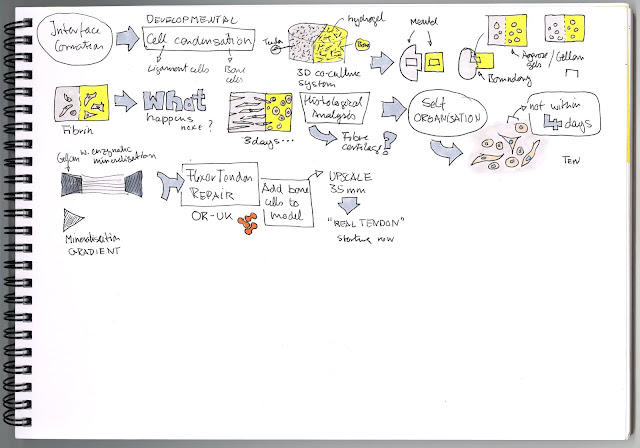Invited seminar at the Glasgow Biomaterials seminar series
#BioMatSem
31.05.2016
Dr Jennifer Z Paxton
University of Edinburgh
More about Jennifer: http://www.ed.ac.uk/integrative-physiology/staff-profiles/research-groups/jennifer-paxton
Papers mentioned in the talk:
Lebled C., Grover L.M, Paxton J.Z. (2014) Combined decellularisation and dehydration improves the mechanical properties of tissue-engineered sinews. Journal of Tissue Engineering. doi: 10.1177/2041731414536720
Jordan R., Saithna A., Paxton J.Z., Grover L., Krikler S.J., Thompson P. (2014) Early failure of tantalum patellar augments in the post-patellectomy knee. Current Orthopaedic Practice. In press
Tan Y., Zhao Z., Paxton J.Z., Grover L.M. (2014) Synthesis and in vitro degradation of a novel magnesium oxychloride cement. J Biomed Mater Res A. 2014 Mar 13 doi:10.1002/jbm.a.35166
Koburger S.K., Bannerman A., Grover L.M., Mueller F., Bowen J., Paxton J.Z. (2013) A novel method for monitoring mineralisation in hydrogels at the engineered hard/soft tissue interface. Biomaterials Science, 2, 41-51
Bannerman A., Paxton J.Z., Grover L.M. (2013) Imaging the hard/soft tissue interface. Biotechnology Letters. Epub. PMID:24129952
Paxton J.Z., Baar K., Grover L.M. (2012) Current progress in enthesis repair: strategies for interfacial tissue engineering. Orthopaedic and Muscular system special issue. 2012 S1.
Paxton J.Z., Wudebwe U., Wang A., Woods D., Grover L.M. (2012) Monitoring sinew contraction during formation of tissue-engineered fibrin-based ligament constructs. Tissue Eng Part A 18(15-16):1596-607
Paxton J.Z., Hagerty P., Andrick J.J., Baar K. (2012) Optimizing an intermittent stretch paradigm using ERK1/2 phosphorylation results in increased collagen synthesis in engineered ligaments. Tissue Eng Part A 18(3-4) 277-84.
Abstract by Jennifer Z Paxton:
Tissue engineering is an emerging field of research focussed on the manufacture of body tissues and organs in the laboratory. It combines the basic principles of biology with engineering and materials science to produce tissue-like structures with the potential for implantation. While research within tissue engineering is making significant advances, a major drawback regarding the implantation of tissue-engineered structures remains the creation of suitable tissue interfaces. This is extremely relevant within the musculoskeletal field, where the main function of the tissue is to generate or transmit force. Without suitable mechanical and biochemically graded transitions between the tissues of muscle, tendon, ligament and bone, stress and strain concentrations would cause tissue injury and in the case of an implanted tissue, certain implant failure. For example, clinically, bone to tendon/ligament healing results in a weak interface, formed mainly of scar tissue, which does not possess the graded structure present in native tissue.
This talk will describe the current progress in engineering tissue interfaces in the laboratory and will also examine the methods currently under investigation to achieve the ultimate goal of functional tissue replacement.

